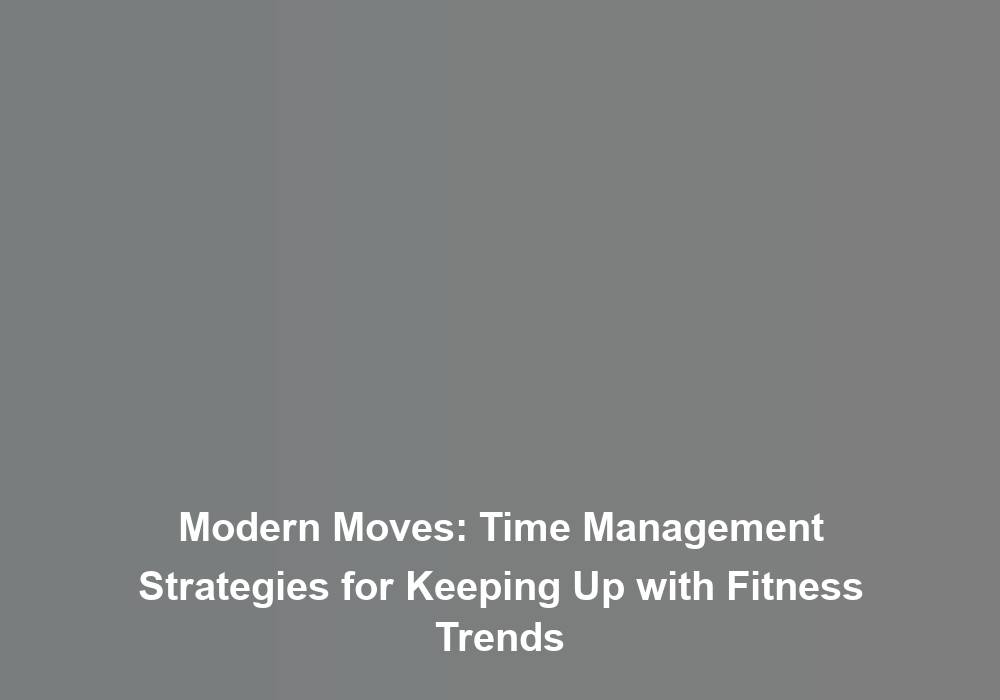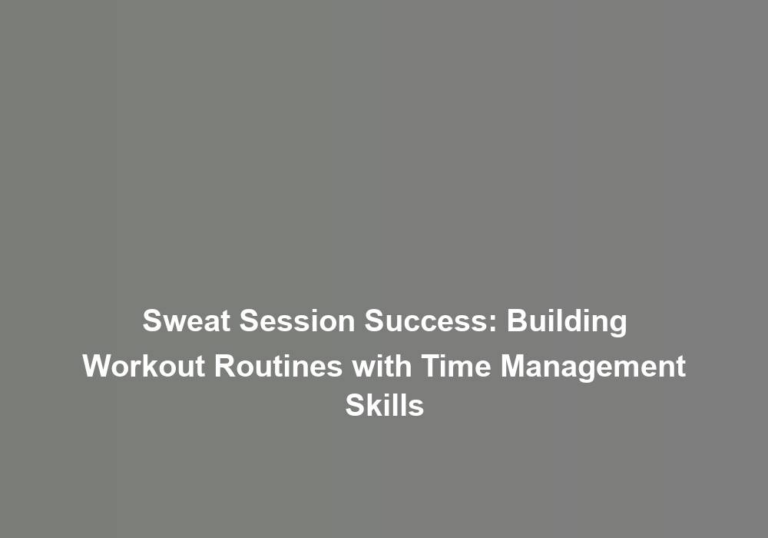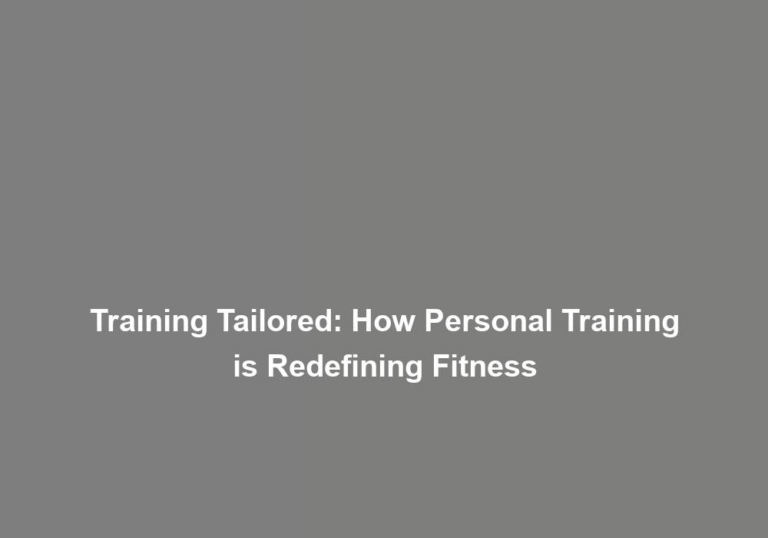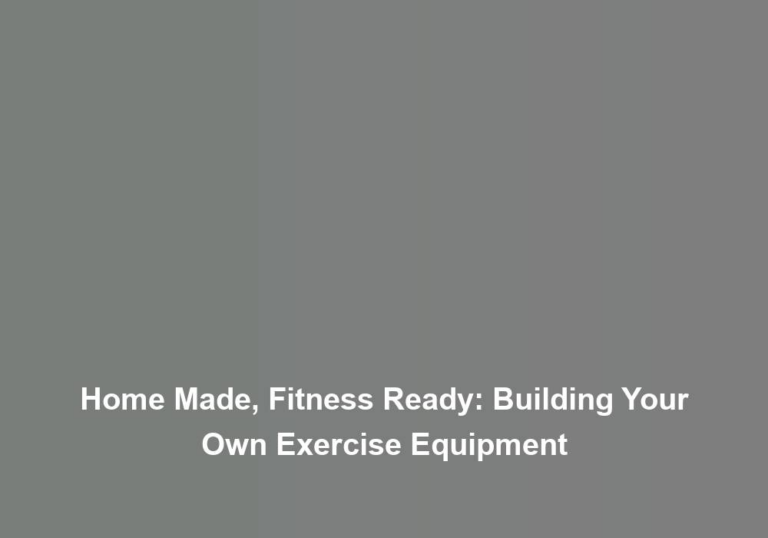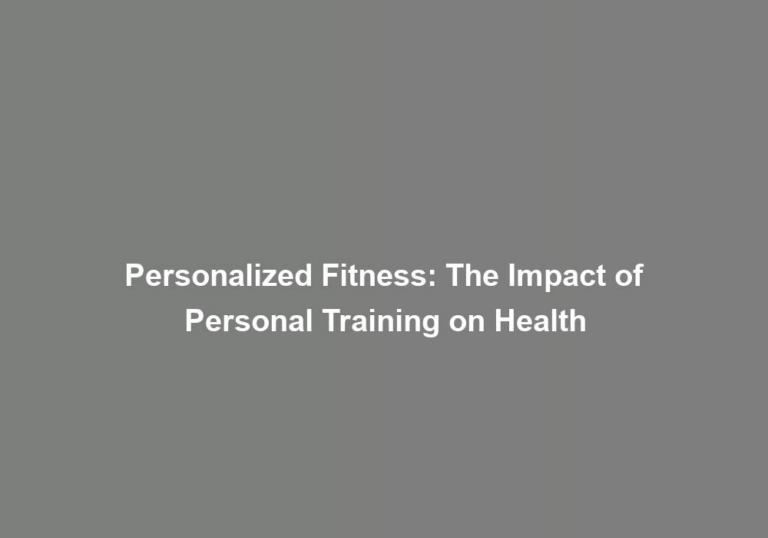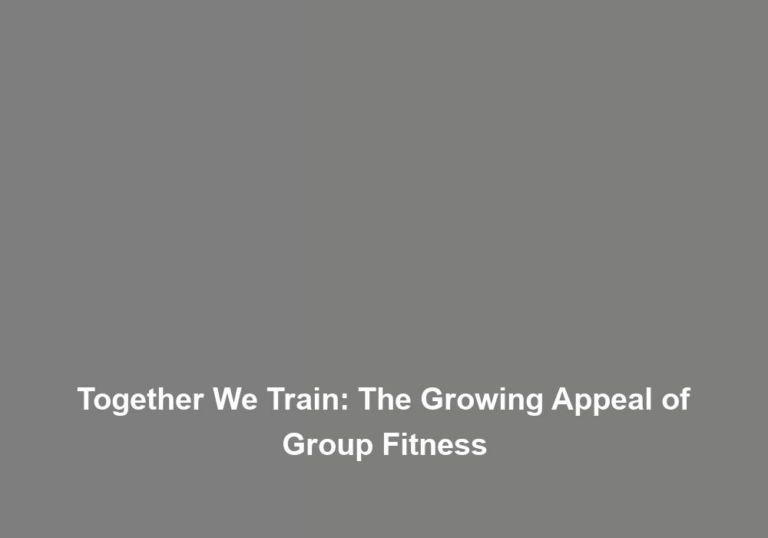Modern Moves: Time Management Strategies for Keeping Up with Fitness Trends
In the fast-paced world of modern fitness, staying on top of the latest trends can feel like a daunting task. With new workouts, equipment, and wellness routines constantly emerging, it can be overwhelming to keep up while also managing your daily responsibilities. But fear not, because there are effective strategies that can help you navigate this ever-evolving landscape without sacrificing your time or energy. By implementing savvy time management techniques and embracing innovative fitness trends, you can find a harmonious balance that allows you to thrive both in your professional and personal pursuits.
Prioritizing Your Fitness Goals
To achieve success in managing your fitness goals, you must prioritize your objectives based on your individual needs and aspirations. Setting boundaries is crucial in ensuring that you allocate time and energy to activities that align with your fitness aspirations. By clearly defining your priorities, you can effectively manage your time and avoid spreading yourself too thin. This might involve setting limits on social commitments or work-related tasks that encroach on your dedicated fitness time.
In addition to setting boundaries, employing motivation techniques can significantly impact your ability to prioritize your fitness goals. Understanding what drives you personally can help you stay focused and committed. For example, if competition motivates you, joining a fitness class or group that challenges you could be beneficial. Alternatively, if you are motivated by self-improvement, setting specific, measurable, attainable, relevant, and time-bound (SMART) goals can keep you inspired and on track.
Efficient Workout Scheduling
Maximize your fitness progress by strategically planning and organizing your workout schedule for optimal efficiency. When it comes to efficient workout scheduling, the key is to maximize results while minimizing time spent in the gym. To achieve this, consider incorporating high-intensity interval training (HIIT) into your routine. HIIT workouts involve short bursts of intense exercise followed by brief recovery periods. This method has been shown to be incredibly effective in improving cardiovascular fitness, burning calories, and building muscle in a fraction of the time compared to traditional steady-state cardio.
Another way to optimize your workout schedule is to embrace the concept of compound exercises. These movements engage multiple muscle groups simultaneously, allowing you to get a full-body workout in a shorter amount of time. Incorporating exercises like squats, deadlifts, and push-ups into your routine can help you maximize the efficiency of your workouts.
Furthermore, consider using supersets and circuit training to make the most of your time at the gym. By performing exercises back-to-back with minimal rest in between, you can keep your heart rate elevated and work multiple muscle groups without spending hours in the gym. This approach not only saves time but also provides an effective way to challenge your body and achieve better results.
Balancing Work and Fitness Commitments
Strategically balancing your work and fitness commitments can help you make the most of your time and energy, continuing the efficiency mindset from your workout scheduling to all aspects of your life. Achieving work-life balance is crucial for your overall well-being. Here are some tips to help you navigate the delicate balance between your professional and fitness commitments:
-
Prioritize and schedule: Set specific times for your work and fitness activities. Prioritize your most important work tasks and schedule your workouts around them. This will help you stay on track with both your work and fitness goals.
-
Set boundaries: Learn to say no when your work commitments start to encroach on your designated fitness time. Similarly, avoid letting your fitness activities interfere with your work responsibilities. Setting clear boundaries will help you maintain a healthy balance between the two.
-
Utilize your breaks: Make the most of your breaks during work hours. Use this time for short bursts of physical activity, such as a quick walk or stretching session. It can help you stay active even on busy workdays.
-
Flexibility is key: Be open to adjusting your schedule when necessary. There may be times when work demands more of your attention, and other times when you can devote more time to your fitness routine. Flexibility allows you to adapt to the ever-changing demands of work and life.
-
Find support: Surround yourself with colleagues, friends, or family members who understand the importance of maintaining a work-life balance. Having a supportive network can make it easier to manage both your professional and fitness commitments.
Balancing work and fitness commitments is an ongoing process, but with these strategies, you can create a harmonious relationship between the two, leading to a healthier and more productive lifestyle.
Embracing Quick Fitness Trends
Embrace the quick fitness trends by incorporating high-intensity interval training into your workout routine for efficient and effective results. Quick workouts are gaining popularity for their time-saving benefits and impressive outcomes. High-intensity interval training, often referred to as HIIT, involves short bursts of intense exercise followed by brief recovery periods. This trendy exercise approach not only burns more calories in a shorter time but also continues to boost your metabolism after the workout.
Incorporating quick fitness trends like HIIT into your routine allows you to maximize your workout time, making it easier to stay consistent even with a busy schedule. These workouts provide a sense of accomplishment and can be easily adapted to your fitness level and preferences. With HIIT, you can personalize your routine by choosing exercises that you enjoy, whether itG??s sprinting, cycling, or bodyweight exercises. The flexibility and variety offered by quick workouts make them not only effective but also engaging and enjoyable.
Integrating Fitness Into Daily Routines
To incorporate fitness into your daily routine, consider identifying pockets of time for physical activity that align with your schedule and preferences. ItG??s essential to find ways to seamlessly integrate fitness into your daily habits, especially when faced with time constraints. Here are some practical strategies to help you make fitness a part of your daily routine:
- Morning Ritual: Start your day with a quick workout or stretch to energize your body and mind.
- Active Commute: If possible, walk or bike to work, or get off public transport a few stops early to squeeze in some extra steps.
- Lunch Break Exercise: Use part of your lunch break for a brisk walk or a short workout session to break up the day.
- Standing Desk or Walking Meetings: Incorporate more movement into your workday by using a standing desk or suggesting walking meetings.
- Evening Wind-Down: Wind down in the evening with relaxing activities like yoga or a leisurely walk to de-stress and unwind.
Conclusion
So, keep in mind that staying on top of fitness trends is like riding a bike – it requires balance, focus, and a willingness to keep pedaling forward. By prioritizing your fitness goals, scheduling efficient workouts, and integrating fitness into your daily routines, you can keep up with the ever-changing landscape of fitness trends. Embrace the quick trends, but donG??t forget the timeless importance of staying active and healthy. Keep moving forward, and youG??ll always stay ahead of the curve.

